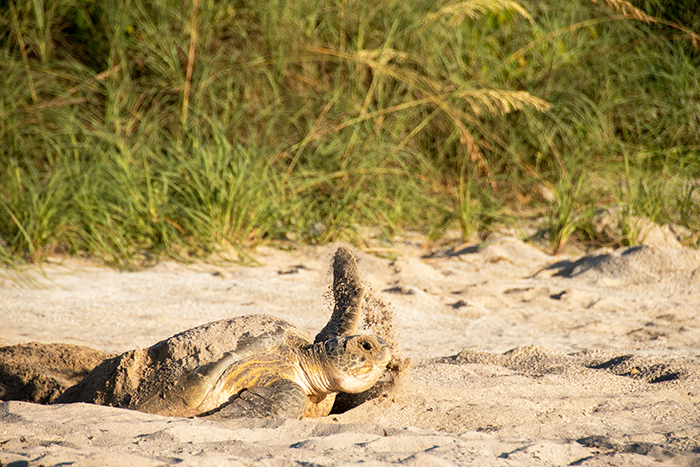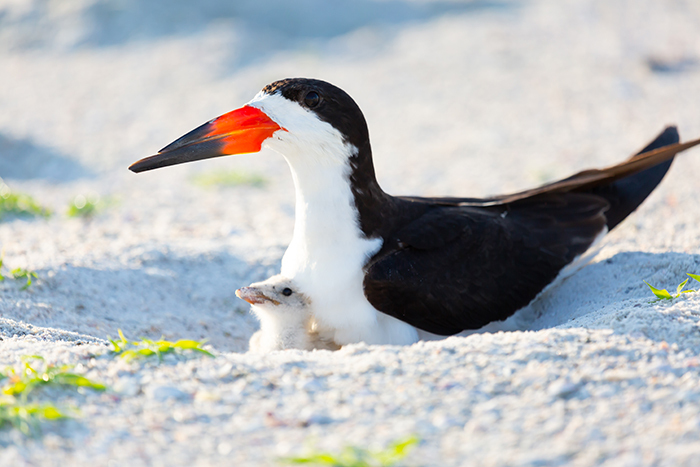Goodwill was Awarded $45,000 Grant from the Golisano Foundation to formalize the Disability Navigation Program
All Posts
Next Post ››Florida SouthWestern State College Buccaneer Bound Summer Bridge Program
 (Having trouble viewing this email? View it as a Web page.) May 20, 2024 Photos available Suggested Tweet: Share the #beach with nesting #SeaTurtles & #Shorebirds this holiday weekend: give them space, keep lights out, & stash trash: https://content.govdelivery.com/ accounts/FLFFWCC/bulletins/39da15e #Florida #Conservation  Share the shore with sea turtles and shorebirds The Florida Fish and Wildlife Conservation Commission (FWC) is sharing the reminder that as we enjoy our beaches this Memorial Day weekend and beyond, nesting season is underway for our state’s imperiled sea turtles and shorebirds along our coasts. Beachgoers can help ensure nest- ing success for both sea turtles and beach-nesting birds by giving them space, removing beach furniture and trash before leaving for the day, keeping beaches clean and dark, and never disturb- ing their nests. Because Florida’s shorelines are critical for sea turtle and shorebird nesting, anyone spending time along our beaches and coasts can have a big impact on the success of this year’s nesting season. Florida’s sandy beaches provide important spring and summer nesting habitat for several species of federally threatened and endangered sea turtles, including loggerhead, leatherback and green sea turtles, with occasional nesting by federally endangered Kemp’s ridley sea turtles. Our beaches are also important habitat for imperiled beach-nesting birds, including black skimmers, least terns, snowy plovers and American oystercatchers. “Getting too close (50 feet or less) to nesting sea turtles can cause them to leave the beach before they complete the nesting process,” said Dr. Robbin Trindell, lead of the FWC’s Sea Turtle Management Program. “By always giving nesting turtles space, you can help marine turtles have another successful nesting season in Florida this year.” All species of sea turtles and their nests are protected and should not be disturbed — it is illegal to harm, harass or take nesting sea turtles, their eggs and hatchlings. “People can help with nesting success of waterbirds by keeping at least 300 feet from nesting shorebirds, seabirds and wading birds,” said Florencia Morales, the FWC coordinator for the Florida Shorebird Alliance. “By giving nesting waterbirds plenty of space, you can help avoid causing them to flush from their nesting sites, which would leave vulnerable eggs and chicks ex- posed to the elements and predators.” In addition to giving space to sea turtles and shorebirds, beachgoers can help with nesting success every time they visit the shore: –Clear the way at the end of the day! Properly dispose of all trash, fill in human-made holes in the sand, and remove all beach toys and furniture from the beach before sunset. Obstacles on the beach can prevent sea turtles from nesting. Trash and other obstacles can also prevent sea turtle hatchlings from reaching the water once they emerge from their nests, as well as entangle shorebirds, turtles and other wildlife. Food scraps attract predators, such as raccoons and crows, that can prey on sea turtle hatchlings, as well as shorebird eggs and chicks. –Do the flock walk! Steer clear of flocks of birds on the beach and keep an eye out for shorebird eggs and chicks to avoid stepping on them. Shorebirds and seabirds also nest in shallow scrapes in the sand and their eggs and chicks are well-camouflaged, making them vulnerable to being stepped on. –Never enter posted areas. Be on the lookout for posted nesting sites and signs designating Critical Wildlife Areas on the beach or coastal islands – these areas are closed to public access to protect wad- ing birds and shorebirds while they nest and raise their chicks. Help protect sea turtle nests by keeping out of marked nests and keeping pets leashed and away from any posted areas. –Lights out! Turn off lights or close curtains after dark to ensure nesting turtles are not disturbed or disoriented as they come ashore and hatchlings do not become disoriented when they emerge from their nests. Make sure exterior lighting adjacent to nesting beaches is long, low and shielded. Avoid using flashlights or cell phone lights and taking flash photos after dark on the beach. –Leave fireworks to the professionals. Keep personal fireworks off the beach and at home; attend an official event instead. The loud sounds and bright lights of personal fireworks on Florida’s beach- es and waterways can have catastrophic effects on nesting birds and their chicks, as well as nesting sea turtles. Pet owners can also help by keeping dogs at home or on a short leash and far away from wildlife when bringing dogs to pet-friendly beaches. Even friendly dogs can be seen as predators by shore- birds, which can cause them to flush and leave their eggs and chicks. For more information about nesting waterbirds, go to MyFWC.com/Shorebirds and download the “Share the Beach with Beach- Nesting Birds” brochure. Or go to the Florida Shorebird Alliance website at FLShorebirdAlliance.org to learn more about how to participate in shorebird and seabird conservation efforts. For more information about nesting sea turtles and how you can help, visit MyFWC.com/SeaTurtle or see the FWC’s “Be a Beach Hero” brochure. You can also help sea turtles by reporting anyone disturbing a sea turtle or nest, as well as sea turtles that are sick, injured, entangled or dead to the FWC’s Wildlife Alert Hotline at 888-404-FWCC (3922).   QUESTIONS? Contact the FWC Florida Fish & Wildlife Conservation Commission · 620 S. Meridian Street · Tallahassee, FL 32399-1600 · (850) 488-4676  |